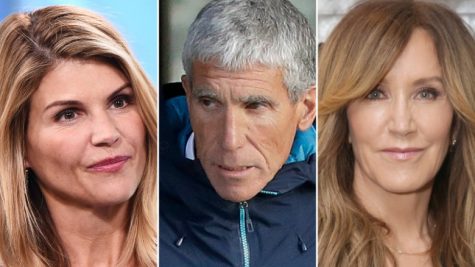Inside College Admissions
May 16, 2018
On a drizzly day in February, nine admissions officers from the prestigious [REDACTED] University sit huddled around a conference room table within the ivy-clad admissions building. The conference room is littered with empty Starbucks cups and the shredded remains of denied applications. On a whiteboard, the number 1.3 is circled prominently—as in the goal for the Class of 2022 admittance percentage.
Each officer sets a new standard of disarray: red ink smudged hands, uncombed hair, sweaters stained with unidentifiable brown splotches. On every available surface sit reams and reams of paper, thousands upon thousands of pages. These precious pages—the applications of high school seniors—are currency in the race for U.S. News rankings, and the more applications in the shredder, the better. The room has the atmosphere of a war zone, if only battles were fought with extracurriculars and “Why [REDACTED]?” essays.
A rookie admissions officer, clearly sleep deprived and over-caffeinated, giddily proclaims, “It’s the most wonderful time of the year! It’s college rejection—er, I mean, acceptance season.”
This officer is not alone in his excitability; as the shredder whirs to life and the hopes and dreams of more prospective students are ripped apart, each admissions officer seems to receive a jolt of adrenaline straight to their bloodstream. The room comes strangely alive as the rejections pile up.
Today is a trying day for the officers. The committee will only work through about 972 applications, hardly making a dent in the 44,367 applications that await them. Of these 972 applications, the committee will accept only 16.
At the end of the day, the head of admissions sounds disappointed, “we accepted 16 applicants. That’s way too many, way more than we’d ideally like. I mean, sure, the applications were impressive: working Broadway actors, sustainable energy pioneers, retired Olympians, the like. But, God, if we keep up these numbers, start accepting more like 2% of applicants? If that happens, we’ll slip from the top five and then… Then we become, we’ll be a…” She finally spits out with disgust, “Safety school.”
As promised on the school’s website, each application is read and discussed by the committee. Some of these discussions take mere seconds. Take for instance, a girl from Montana with perfect test scores and grades, who was an all-state swimmer and journalist and starred as Dorothy in a nationally touring production of “Wizard of Oz.” When her application is brought to the table, a veteran officer complains that Dorothy is “by far the most boring character” in the musical. And thus the matter is settled: denied.
Some of the discussions, though, can take up to an hour or two. The committee has engaged in one of these contentious debates today about a boy from Alaska. Between his full-time job as a grocery clerk and raising three younger brothers, he is captain of the hockey team, debate team, and robotics team. In his free time, he conducts research on cancer—the disease which left him and his brothers orphans—and holds a patent for a potential cure. Finally, after three hours of discussion, the admissions head intervenes, “what stage of F.D.A. approval is the cure in?” The cure is still steps away from commercialization. The admissions head sighs and condemns the boy to the eternal damnation of the waitlist, that hell-ish limbo.
To the casual observer, the designations of accept, waitlist, and deny seem to be appointed at random. A veteran officer admits, “I love the unpredictability, and honestly I think the applicants do too. It adds intrigue. I mean, who doesn’t love going to Las Vegas? Except with this, it’s far more random and we’re gambling with kids’ futures. It’s really great fun. Exhilarating actually.”
The head of admissions, though, insists there’s a method to the madness, “I can’t say there’s a perfect formula for acceptance. We’re looking to create a goal-driven global network of passionate, committed, innovative collaborators that will impact our community and enact change across the world through service to others, ground-breaking research, risk-taking inquiry, mindful action, and a common humanity. So those are the traits we look for in applicants, and we believe that all the students here are dedicated to and exemplify the pillars of this university.”
Another admissions officer affirms, “I’m not exactly sure what all of that means or what that exactly looks like, but I can say with absolute certainty that we only accept people with those traits. The advice I would give all prospective students is to exhibit motivation and dedication and thoughtfulness and passion and ambition and kindness and generosity and intelligence and purpose and grit and individuality.” She pauses before adding, “or be an athlete. Or be a legacy. Or donate a building to the campus. Otherwise, truthfully, you’re probably screwed.”
Finally, the committee breaks from the discussion. Now, it’s time for the officers’ daily relaxation ritual: feeding the shredder. The committee gathers around and observes the shredder doing its work with the same self-satisfaction as a parent watching their child’s clumsily banging out “Somewhere Over the Rainbow” on the piano at a recital. Eventually, the rookie officer disrupts the congratulatory, reverential silence, “this is good, right?”
The admittance percentages are plunging. The standards for admissions are rising. The application process is spiraling far beyond the scope of any parental understanding. The race for acceptance is more competitive than ever, and applicants are arming themselves with unmanageable class schedules and lofty extracurricular activities.
After a moment, the head admissions officer responds, “No, this is great!”




